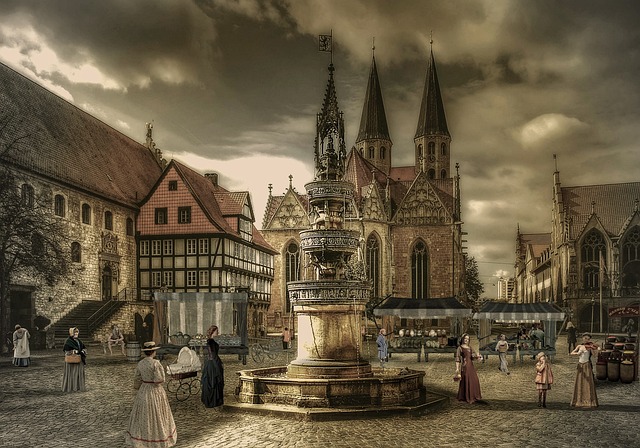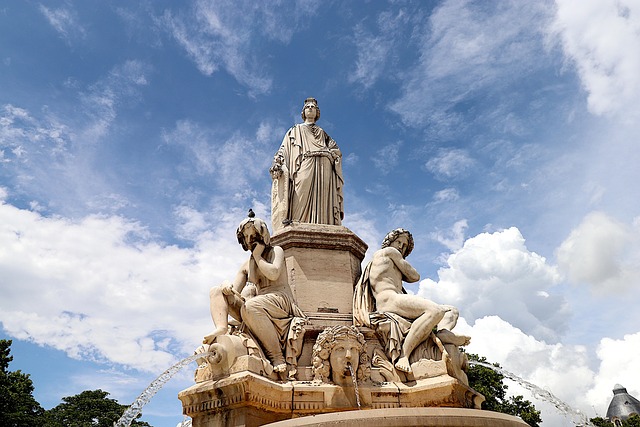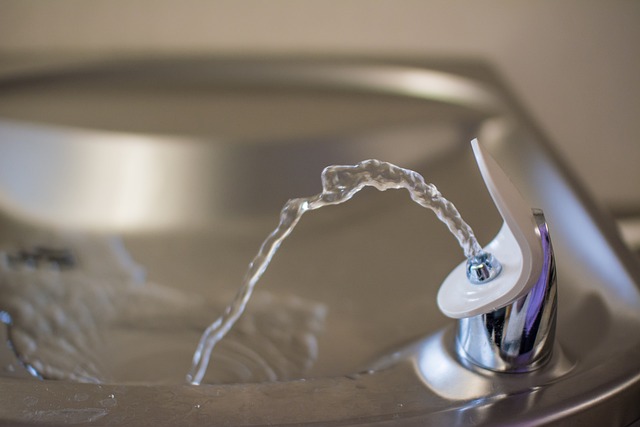Elevate Your Space: Stylish & Functional Garden Fountains
Selecting a garden fountain involves matching your style and the fountain's design with your ou…….
Introduction
Fountains have long captivated the senses, combining water’s fluidity with light, sound, and sometimes color to create mesmerizing installations that enrich both public spaces and private settings. These water features range from small ornamental pieces in gardens to grand architectural wonders in public squares. The term “fountain-installation” refers to the design, creation, and placement of such water structures, which serve not only as aesthetic elements but also as environmental enhancers and cultural landmarks. This comprehensive article will explore the intricacies of fountain-installation, its global impact, economic considerations, technological advancements, policy implications, challenges, case studies, and future prospects. Readers will gain a nuanced understanding of this multifaceted art form and its significance in contemporary society.
Understanding Fountain-Installation
A fountain-installation is an engineered structure that channels flowing water in a controlled environment. It typically consists of a water source, pumping mechanism, plumbing system, basin or container, nozzles or jets, and lighting. The historical context of fountain-installations dates back to ancient times when the Romans perfected aqueduct systems to supply water for public fountains. These installations have evolved over the centuries, integrating art, technology, and environmental considerations into modern-day masterpieces.
Fountain-installations are significant in various ways: they can serve as a centerpiece in urban planning, contribute to biodiversity by creating habitats for wildlife, provide cooling effects in public spaces, and offer an interactive experience for communities. They are a testament to human creativity and our ability to harmonize with nature.
Global Impact and Trends
The global impact of fountain-installations is profound, influencing urban design, environmental sustainability, and cultural identity. Key trends shaping the trajectory of fountain-installations include eco-friendly designs, interactive technologies, and energy efficiency. In regions like the Middle East, where water is a precious resource, fountain-installations are being designed to use less water without compromising their aesthetic appeal or functionality. In contrast, countries with abundant water resources, such as the United States and Canada, focus on creating large-scale, energy-efficient installations that serve as community hubs.
Economic Considerations
Fountain-installations are not merely artistic endeavors but also economic drivers. The market for fountains is diverse, catering to residential, commercial, and municipal sectors. Investment patterns indicate a growing interest in sustainable and smart water features that reduce operational costs while enhancing visual appeal. These installations contribute to the local economy by creating jobs, attracting tourism, and increasing property values. They are an integral part of economic systems, especially in urban regeneration projects and real estate development.
Technological Advancements
Technological advancements have revolutionized fountain-installations, making them more efficient, interactive, and sustainable. LED lighting has replaced traditional halogen and neon lights, significantly reducing energy consumption while providing a wider spectrum of vibrant colors. Smart controls and sensors allow for real-time adjustments to water flow and light patterns, optimizing performance and conserving resources. Innovations in material science have led to the development of durable, low-maintenance materials that withstand environmental factors without compromising aesthetic quality.
Policy and Regulation
Policies and regulations governing fountain-installations ensure safety, sustainability, and accessibility. Building codes, water conservation laws, and public health regulations influence the design and operation of fountains. In some regions, there are specific guidelines for the use of water in public spaces during drought conditions. Zoning laws often dictate where these installations can be placed and how they must be constructed to blend with the surrounding environment.
Challenges and Criticisms
Fountain-installations face several challenges, including energy consumption, water conservation concerns, maintenance costs, and environmental impact. Critics argue that some installations are extravagant and wasteful, especially in regions experiencing water scarcity. To address these issues, designers and engineers are developing new technologies that use less water and energy, such as recirculating systems and solar-powered pumps. Education and public awareness campaigns also play a role in promoting sustainable practices.
Case Studies
Several case studies demonstrate the successful integration of fountain-installations into various settings. The Bellagio Fountains in Las Vegas, Nevada, are a prime example of a grand installation that combines artistry with cutting-edge technology. In Singapore, the Marina Bay Sands Skypark rooftop includes a 150-meter long infinity swimming pool with a vanishing edge that seemingly blends into the water feature below. These case studies provide valuable insights into the design process, community engagement, and long-term maintenance strategies that contribute to their success.
Future Prospects
The future of fountain-installations is ripe with potential for growth in areas such as biophilia, integrating natural elements into urban spaces; smart city technologies, where fountains become part of a networked system for environmental monitoring and data collection; and adaptive reuse of existing structures to serve new purposes. As sustainability becomes increasingly important, we can expect to see more installations that prioritize water conservation, energy efficiency, and minimal environmental impact while continuing to delight and inspire users.
In conclusion, fountain-installations are a multifaceted element of contemporary culture, blending art, technology, and environmental stewardship. They serve as a reflection of human ingenuity and our relationship with water. As we move forward, it is imperative to balance the aesthetic and functional aspects of these installations with sustainable practices and responsible resource management. With careful planning and innovative design, fountain-installations will continue to enrich our lives and landscapes for generations to come.

Fountain installation requires strategic planning, from selecting the right type and design to consi…….

Custom fountains transform indoor and outdoor spaces with their serene beauty and soothing water sou…….

In the digital age, outdoor living is a sought-after trend. Durable outdoor fountains offer a soluti…….

When selecting outdoor fountains, prioritize durability to withstand harsh conditions and minimize e…….

Professional fountain services are leading the way in creating water-efficient, aesthetically pleasi…….

To preserve the beauty and functionality of outdoor fountains, invest in weatherproof construction u…….

Custom fountain design transforms ordinary spaces into captivating oases with unique aesthetics tail…….

Garden fountains, available in classic to modern designs, offer multiple benefits for outdoor spaces…….

Weatherproof fountain construction utilizes high-quality, corrosion-resistant materials like stainle…….